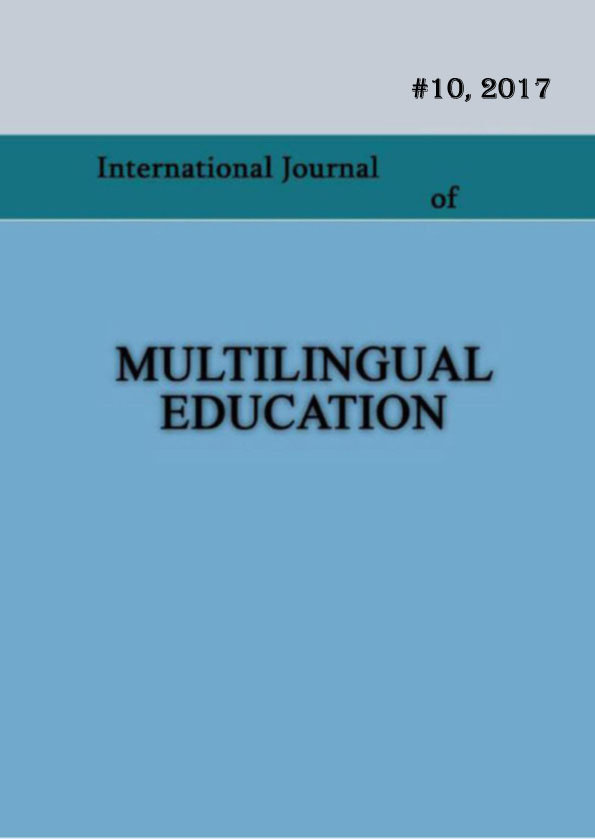Subtitling of films as a potential tool in learning Greek as a second or as a foreign language
Keywords:
Learning of the Greek language; teaching practice of subtitling films.Abstract
Students’ motivation and interest for more engagement in learning is desired for each educator. In recent years, with the development of digital technology, "filming" is one of the instruments that can be easily used in various educational contexts and multiple ways.
It is suggested in this report that the use of subtitles as a dynamic tool can be used for educational purposes in teaching Greek as a second or as a foreign language (language development of reading, writing and speaking).
The focus will be the case of the Institute of Classical, Byzantine and modern Greek studies in Tbilisi, in Georgia. There has been an attempt to implement the subtitling tool to support the learning of the Greek language in the Department of Modern Greek studies. The aim was the use of subtitles in the Georgian language through Greek films for a more attractive and engaging teaching experience of the students.
The results of this application in teaching practice of subtitling films, the benefits and the difficulties have been recorded and are presented in this article.
References
Asimakoulas, D. (2004). Towards a model of describing humour translation: A case study of the Greek subtitled versions of Airplane! and Naked Gun. Meta: Journal des traducteursMeta:/Translators' Journal, 49(4), 822-842.
Borghetti, C., & Lertola, J. (2014). Interlingual subtitling for intercultural language education: a case study. Language and Intercultural Communication, 14(4), 423-440.
Danan, M. (2004). Captioning and subtitling: Undervalued language learning strategies. Meta: Journal des traducteursMeta:/Translators' Journal, 49(1), 67-77.
Gambier, Y. (2003). Introduction: Screen transadaptation: Perception and reception.
Georgakopoulou, P. (2003). Reduction levels in subtitling DVD subtitling: A compromise of trends (Doctoral dissertation, University of Surrey).
Georgakopoulou, P. (2009). Subtitling for the DVD Industry. Audiovisual translation: Language transfer on screen, 21-35.
Hadzilacos, T., Papadakis, S., & Sokoli, S. (2004). Learner’s version of a professional environment: film subtitling as an ICTE tool for foreign language learning. Proceedings World Conference on E-Learning in Corporate, Government, Healthcare, and Higher Education, 680-5.
Judickaitė-Pašvenskienė, L. (2013). Subtitled cartoons in foreign language teaching and learning context: dangers. Darnioji daugiakalbystė, (2), 161-172.
Karamitroglou, F. (2000). Towards a methodology for the investigation of norms in audiovisual translation: The choice between subtitling and revoicing in Greece (Vol. 15). Rodopi.
Kostopoulou-Duka, L. (2011). The problematic of translation in subtitles: translation analysis techniques and applications in Didactics of languages- Η προβληματική της μετάφρασης στον υποτιτλισμό: ανάλυση μεταφραστικών τεχνικών και εφαρμογές στη διδακτική των γλωσσών (Doctoral dissertation, Aristotle University of Thessaloniki (Auth). Philosophical Faculty. Department of English language and literature). http://thesis.ekt.gr/thesisBookReader/id/26211#page/1/mode/2up (in Greek).
Lertola, J. (2012). The effect of the subtitling task on vocabulary learning. Translation research projects, 4, 61-70.
Lertola, J. (2015). Subtitling in language teaching: Suggestions for language teachers. Subtitles and Language Learning. Principles, strategies and practical experiences, 245-267.
Lonergan, J. (1990). Video in language teaching, Cambridge: Cambridge University Press.
Nenopoyloy T. & Kostopoulou L. (2008). Subtitling and intercultural dialogue: otherness/similarity of languages-cultures- Υποτιτλισμός και διαπολιτισμικός διάλογος: ετερότητα/ ομοιότητα των γλωσσών- πολιτισμών. International Conference for the European year of intercultural dialogue, 717-723, Thessaloniki (in Greek).
Neves, J. (2004). Language awareness through training in subtitling. BENJAMINS TRANSLATION LIBRARY, 56, 127-140.
Papadakis Sp. & Papadimitriou S. (2008). Utilizing the educational television in the teaching of information technology in middle school: A didactic proposal with subtitling activities alliloepidrastikes films- Αξιοποιώντας την Εκπαιδευτική Τηλεόραση στη διδασκαλία της Πληροφορικής στο Γυμνάσιο: Μια διδακτική πρόταση με αλληλοεπιδραστικές δραστηριότητες υποτιτλισμού ταινιών. 4th Congress Didactics of Informatics, 487- 492, Patra. http://www.etpe.gr/custom/pdf/etpe1043.pdf (in Greek).
Ragni, V. (2016). Subtitles and language learning. Principles, strategies and practical experiences. Siamanidoy, S. (2009). Greek- Georgian Dictionary- Ελληνογεωργιανό Λεξικό. Tbilisi: Logos. (in
Greek- Georgian).
Sokoli, S. (2006). Learning via Subtitling (LvS): A tool for the creation of foreign language learning activities based on film subtitling. Proceedings of the Marie Curie Euroconferences MuTra: Audiovisual Translation Scenarios. http://www.euroconferences.info/ proceedings/2006_Proceedings/2006_Sokoli_Stravoula.pdf.
Sokoli, S. (2009). Subtitling norms in Greece and Spain. In Audiovisual Translation (pp. 36-48).
Palgrave Macmillan UK.
Williams, H., & Thorne, D. (2000). The value of Teletext subtitling as a medium for language learning. System, 28(2), 217-228.
Downloads
Published
How to Cite
Issue
Section
License
Copyright (c) 2017 Georgia Dimopoulou

This work is licensed under a Creative Commons Attribution-NonCommercial 4.0 International License.
Copyright (c) - Authors who publish with this journal agree to the following terms: Authors retain copyright and grant the journal the right of first publication with the work simultaneously licensed under a Creative Commons Attribution-Noncommercial 4.0 International License, which allows others to share the work with an acknowledgement of the work's authorship and initial publication in this journal. Authors are permitted and encouraged to post their work online (e.g., in institutional repositories or on their personal website) prior to and during the submission process, as it can lead to productive exchanges, as well as earlier and greater citation of published work (see The Effect of Open Access). Authors may enter into separate, additional contractual arrangements for the non-exclusive distribution of the journal's published version of the work (e.g., post it to a repository or publish it in a book), with an acknowledgement of its initial publication in this journal.

